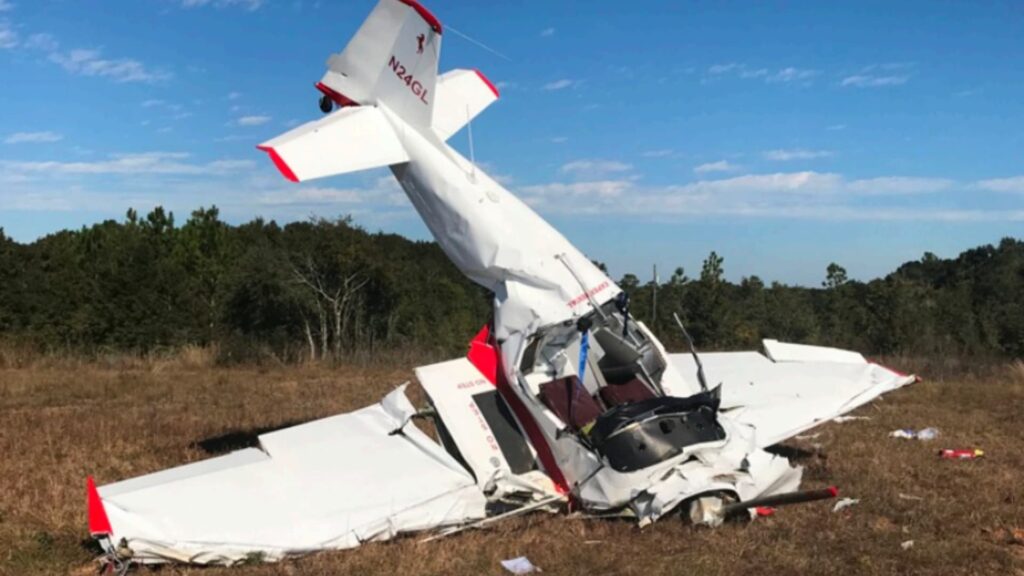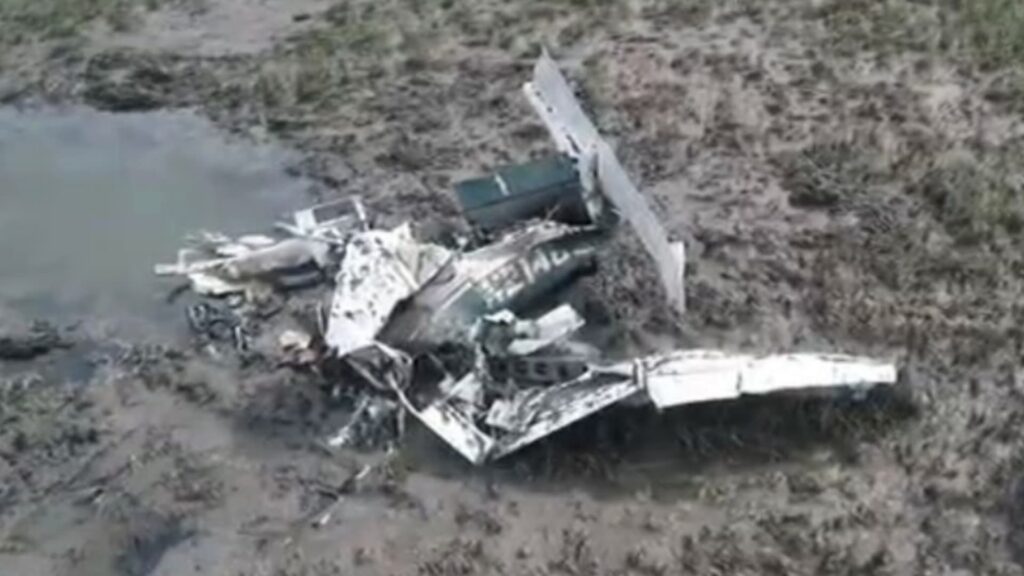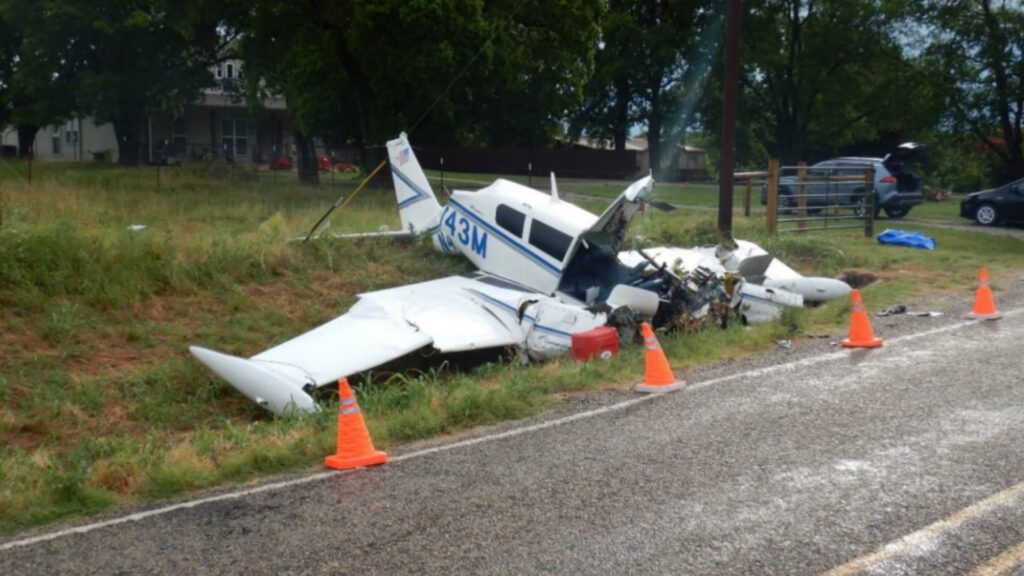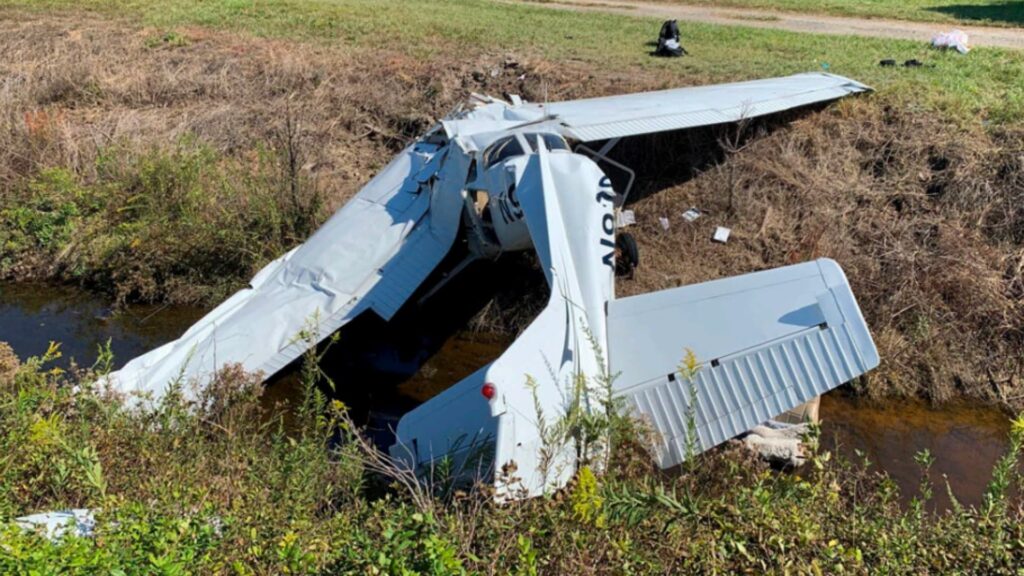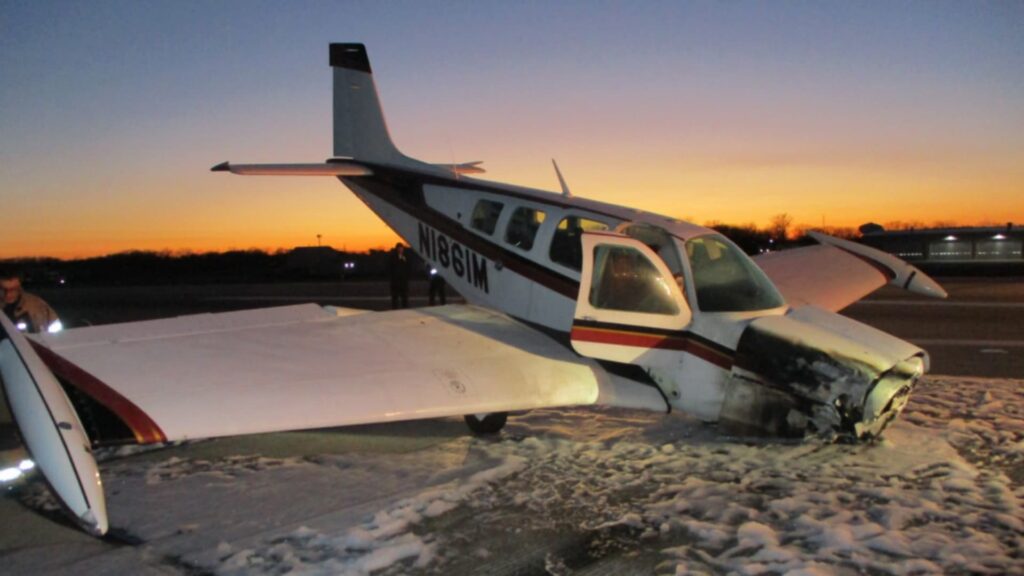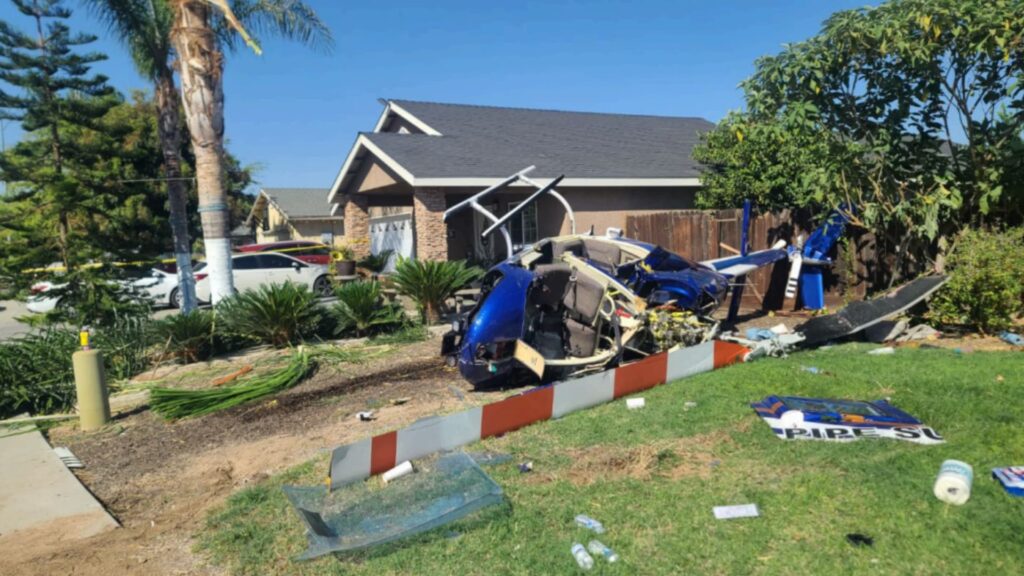This accident involved an experimental Bushby Mustang II, N24GL, that crashed just off the departure end of runway 36 at Peter Prince Airport in Milton, Florida, on the morning of November 24, 2019. The pilot was killed, and the airplane was substantially damaged. Weather was clear, winds were around 10 knots out of 340 degrees, and visibility was 10 miles – a good VFR morning at a non-towered airport.
The NTSB ultimately said this came down to loss of control on takeoff: an abrupt, aggressive pitch-up, followed by an aerodynamic stall and spin from an altitude too low for recovery. There were some lingering questions about engine power and possible fuel contamination, but the core finding was simple and unforgiving: angle of attack and airspeed management right after liftoff.
The Pilot and the Airplane
The pilot was 38 years old and an active-duty Air Force mobility pilot. He wasn’t just current; the Air Force confirmed he met all applicable currency and qualification standards for his USAF duties at the time of the accident. On the civilian side, he held an airline transport pilot certificate with single- and multiengine land ratings, along with commercial, private, and multiple flight instructor certificates for single-engine, multiengine, and instrument airplanes.
But here’s the key detail: in the civilian logbook, he had only 91.4 hours total time and 26.7 hours in the Bushby Mustang II. So while he was highly experienced in larger multiengine military aircraft, he was still relatively low-time in this specific, high-performance, experimental tailwheel airplane. That mismatch between overall experience and aircraft-specific experience is an important human factor in this story.
The airplane itself was a two-seat, tailwheel, experimental amateur-built Bushby Mustang II, powered by a Lycoming O-320-A3B rated at 150 horsepower. It held an experimental airworthiness certificate and had recently undergone a condition inspection in August 2019, as shown in the aircraft data table on page 5 of the report.
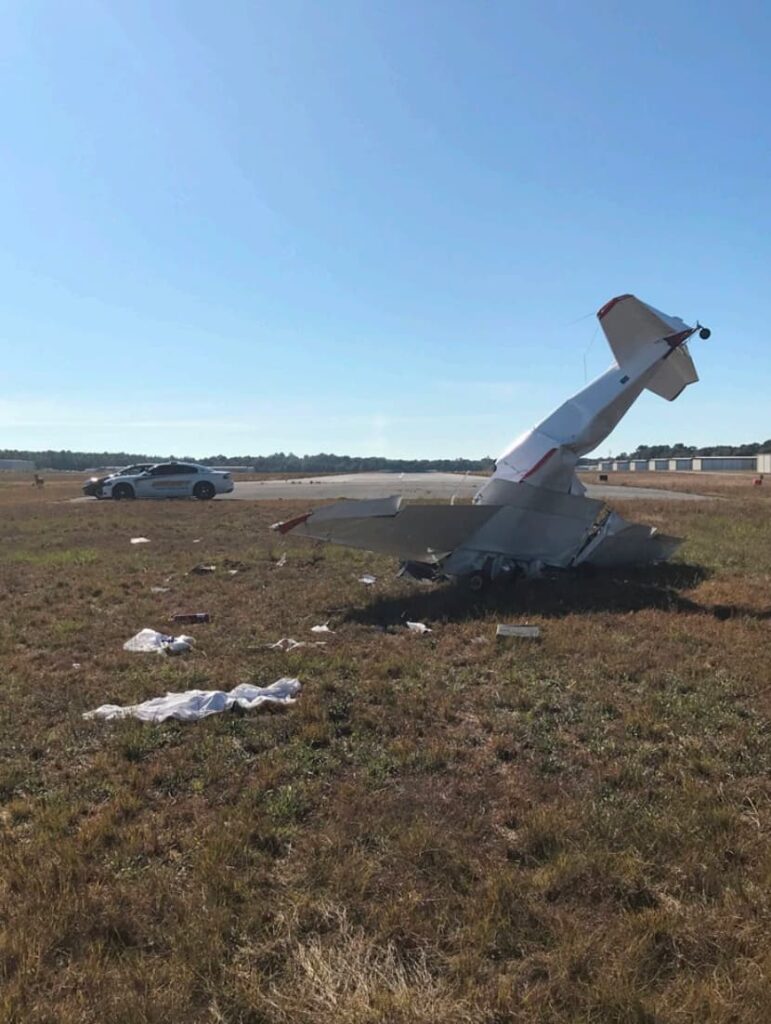
The Morning at Peter Prince Airport
On the day of the accident, the pilot departed from his home airport, Peter Prince (2R4), for what appears to have been a local flight. The runway used was 36, a 3,701-foot-long asphalt strip, dry and in good condition according to the airport information on page 6.
Two witnesses driving on airport property watched the Mustang do a touch-and-go on runway 36. They saw the airplane roll down the runway and then, when they looked back, it was descending straight down toward the ground from maybe 50 to 100 feet just beyond the north end of the pavement. They didn’t hear the engine, but their car windows were up. They drove to the crash site immediately and secured the fuel selector from ON to OFF after noticing a strong fuel smell.
Two flight instructors on the tarmac were monitoring their students in the pattern. One saw the Mustang only on final; the other watched it more closely. That second instructor noticed the accident airplane spend a long time in the run-up area for runway 36, consistent with the pilot’s plan to do a thorough engine check before flying. Later, he saw the airplane depart and noted that it used almost the entire runway length. When it rotated, the pitch attitude was described as “fairly aggressive,” enough that he could see the entire top of the airplane.
From there, the sequence was quick: the airplane pitched up steeply, then stalled and entered a left spin, rotating about a quarter turn before impacting nearly vertical just beyond the runway end. The instructor didn’t recall hearing the engine but added that it wasn’t unusual for sport airplanes at that field to fly low and level down the runway, then pull up sharply near the end for a steep climb. That’s what he initially thought this pilot was doing.
A separate witness about a mile off the end of runway 36 heard two airplanes in the pattern and a third whose engine sounded “muted,” “odd,” and “not making full power” before it went quiet. He suspected something had gone wrong when he no longer heard it.
Maintenance History and the Engine Question
The engine story is where things get interesting. About three weeks before the accident, the pilot told a friend he’d rejected a takeoff due to a loss of engine power. He mentioned ongoing issues with the electronic magnetos, but not with fuel or water contamination.
At the last condition inspection, the mechanic had drained the main (header) fuel tank and found a significant amount of water – roughly half of a water bottle’s worth. He described it as “rainwater” with light sediment. He dried the tank and added fresh fuel, but he did not open the carburetor to check for trapped water downstream in the system.
In the days leading up to the accident, the pilot reported an unusually large rpm drop on the left electronic magneto during a run-up. The mechanic removed, cleaned, and rotated all eight automotive spark plugs. On the next run, the large rpm drop moved to the right magneto. Both men decided the plugs were likely the problem. The pilot bought a new set of automotive plugs, and the mechanic installed all eight two days before the accident. A post-maintenance run-up showed normal performance on both magnetos, and the pilot said he planned a long engine run before flying.
After the crash, investigators dug deep into the engine. The propeller showed evidence of at least some power at impact on one blade—bending and chordwise scratching—while the other blade appeared undamaged. Compression and valve train continuity were established on all four cylinders, the oil system looked clean, and the spark plugs appeared new with no electrode damage. Both electronic magnetos were bench-tested under NTSB supervision at the manufacturer and showed no mechanical or functional issues.
The fuel system, though, did show a problem. The carburetor bowl and accelerator pump chamber contained a small amount of clear and rust-colored fluid with corrosion. When tested, this fluid was positive for water. A milky white fluid in the fuel inlet screen port also tested positive for water, though the screen itself was free of debris. This fit with the earlier story of water in the header tank at the last inspection.
The NTSB concluded it was possible the engine experienced some degree of power loss due to fuel contamination. However, they also noted that the pilot’s choice to pitch up aggressively to near-vertical right after liftoff did not match the kind of response you’d expect from a pilot facing an obvious loss of power on takeoff.
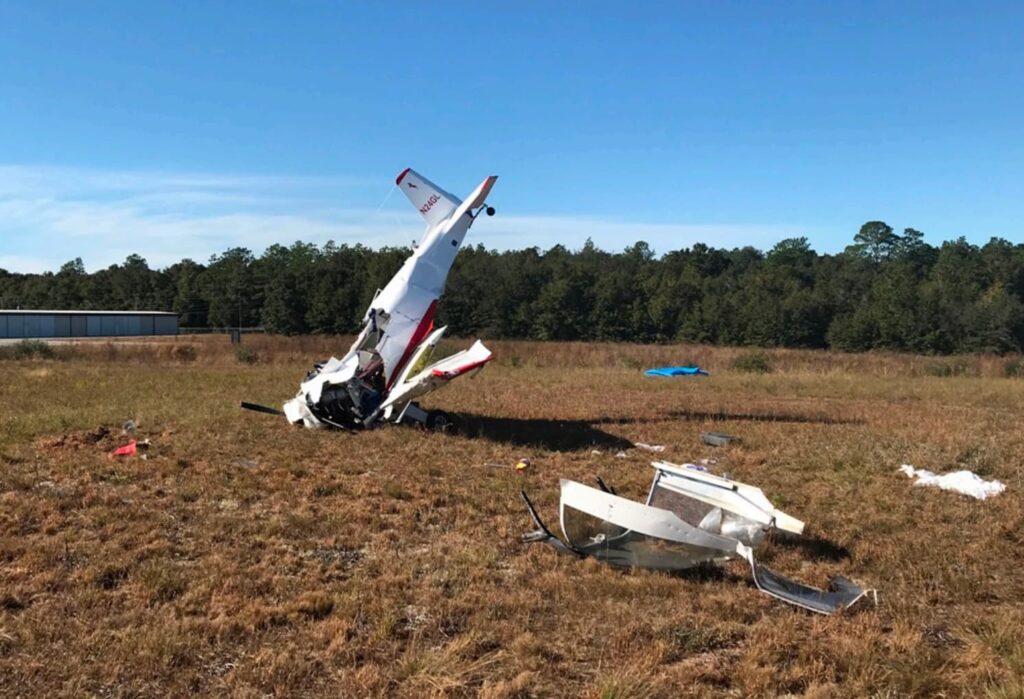
Impact, Wreckage, and Survivability
The airplane came to rest on its nose in the grass just beyond the departure end of runway 36. The tail was nearly straight up, there was no post-impact fire, and all major components were present. Leading edges on both wings showed impact damage consistent with the steep nose-down attitude described by witnesses.
Inside the cockpit, both seats remained attached to their rails, but what investigators found with the restraint system matters. The airplane was equipped with a four-point harness, yet the pilot’s shoulder harness was not attached. It was lying on the floor near the right seat. When tested, the harness latched and functioned properly. The lap belt remained buckled but had torn loose from its inboard structure during the high-energy nose-first impact; the outboard attachment point remained secure.
Controls showed continuity, with the elevator control tube fractures traced to overload at impact. Elevator trim functioned normally. Nothing in the control system suggested any pre-impact failure or restriction.
Toxicology found diphenhydramine (Benadryl/Unisom) at a low level in the pilot’s blood and urine. The NTSB concluded the concentration was not high enough to have contributed to the accident.
Probable Cause and What It Means
The NTSB’s probable cause was straightforward: the pilot’s failure to maintain control of the airplane on takeoff, resulting in an aerodynamic stall. Contributing factors, like possible water contamination in the fuel, could not be firmly tied to a clear engine failure at the moment of the accident, especially with a mechanically healthy engine and magnetos on teardown.
This was, at its core, a low-altitude stall/spin following an abrupt, aggressive climb out of ground effect – from an altitude where recovery simply wasn’t possible.
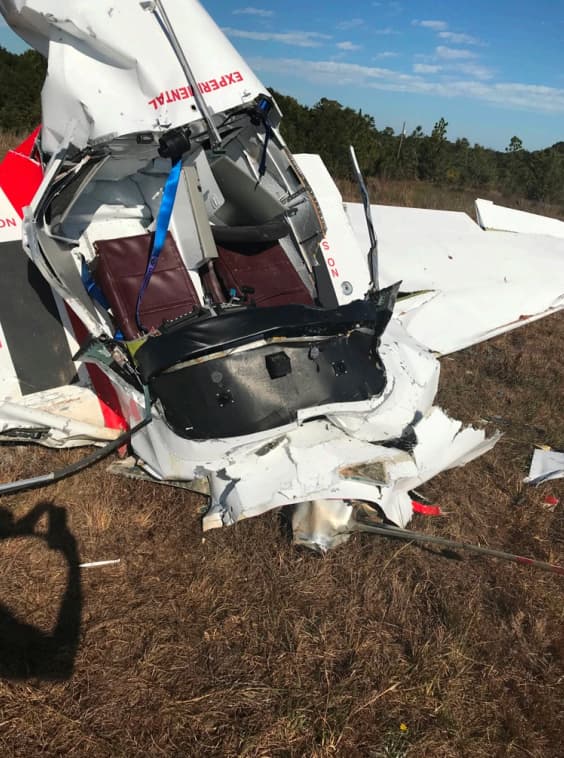
Key Takeaways for the Rest of Us
There are a few big lessons here that apply to anyone flying, especially in high-performance experimentals:
First, experience doesn’t always transfer cleanly. This pilot was absolutely an expert in his Air Force world, but he was still relatively new in this particular airplane. High-performance, light, experimental tailwheel aircraft have very different handling, especially near stall and at high pitch attitudes. Respecting that transition – and treating yourself as low-time in type, even if you’re a high-time pro elsewhere – is critical.
Second, the initial climb is not the place to get creative. A low-level, aggressive pull-up is a razor-thin energy and margin game. Even with full power, an over-rotation can push the airplane into a stall before you have altitude to trade for recovery. When you’re just a wingspan or two off the ground, angle of attack discipline matters more than anything.
Third, maintenance and fuel management habits matter long before the accident flight. Water in the main tank at the last inspection, plus unexplained power issues and magneto concerns in the weeks before, paint a picture of an engine that needed a fully flushed and verified fuel system, not just new plugs and a tank drain. If you ever find significant water in a tank, that’s a cue to go find out how far downstream that contamination might have traveled.
Finally, there’s a survivability layer. This was a very high-energy, nose-first impact, and there is no guarantee any restraint configuration would have changed the outcome. But flying with the full four-point harness attached is one of the simplest ways to give yourself a better chance in any loss-of-control or off-field event. The system was there and functional; it just wasn’t being used fully.
In the end, N24GL’s crash at Peter Prince Airport is a reminder that even highly trained, professional aviators can get into trouble right after liftoff if pitch, airspeed, and engine-risk management aren’t treated with the same discipline we apply in more complex environments. The airplane doesn’t care what’s on your certificate – it only cares about energy, angle of attack, and the choices you make in the first few seconds after the wheels leave the ground.

